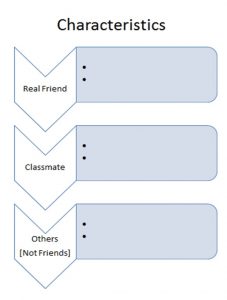Bullying and Autism is an issue that comes up often for parents of children on the spectrum throughout elementary, middle, and high school. Individuals with an Autism Spectrum Disorder (ASD) remain highly vulnerable to bullying behavior. Parents, teachers, other students, and the community must be sensitive to the particular needs of these students and vigilant in bullying prevention and intervention.

This week’s blog will point families in the direction of multiple resources available.
This first resource is quite extensive and provides a comprehensive view of bullying:
“Eyes on Bullying . . . What Can You Do? A toolkit to prevent bullying in children’s lives”
The following are excerpts from this useful manual:
Bullying Basics
We now know that:
- Bullying is NOT pre-wired, harmless, or inevitable
- Bullying IS learned, harmful, and controllable
- Bullying SPREADS if supported or left unchecked
- Bullying INVOLVES everyone—bullies, victims, and bystanders
- Bullying CAN BE effectively stopped or entirely prevented
Beginning in the preschool years, adults can teach children important bullying prevention skills and guide children as they practice using these skills. Social skills that form an important foundation for bullying prevention include:
- Showing empathy toward others
- Interacting assertively
- Solving social problems
Bystanders also have the power to play a key role in preventing or stopping bullying.
Some bystanders… directly intervene, by discouraging the bully, defending the victim, or redirecting the situation away from bullying.
Other bystanders… get help, by rallying support from peers to stand up against bullying or by reporting the bullying to adults. Look Around…Who Is Involved?
Bystanders’ actions make a critical difference. Children and adults should think ahead about what they will do when they witness or hear about bullying.
There is also an Information Sheet on Bully Prevention at the following website:
Information Sheet Taken from The Spectrum, Vol.2, No. 1, Autumn 2006, pp 4‐6.
In this information sheet, there are many tips and strategies for parents. One such strategy is to teach the child how to recognize suspicious or unfriendly behavior. You might support this through a variety of visual supports.
This particular visual strategy helps to clarify the difference between a real friend, a classmate and others that are not a friend.

More Bullying Prevention Websites
- Anti-Bullying Network: http://www.antibullying.net/
- Bullying.org… “Where you are NOT alone”: http://www.bullying.org/
- Center for the Study and Prevention of Violence: http://www.colorado.edu/cspv/
- Committee for Children: http://cfchildren.org/
- Kansas Bullying Prevention Program: http://www.kbpp.org
- Online Bullying Help Center for K-12 Schools: http://www.bullystoppers.com
- Take Action Against Bullying: http://www.bullybeware.com/
by Lisa Rogers
The Education (K-12) Blogs and Special Ed Q & A are written and maintained weekly by Lisa Rogers with Educating Diverse Learners. Lisa received her M.A. in Special Education with an endorsement in the area of individuals with severe disabilities. Mrs. Rogers has also created products that have been used throughout the state of Texas for training purposes. Through the Association for Texas Professional Educators [ATPE], Ms. Rogers has produced an online course that targets the importance of visual strategies for student with autism spectrum disorders and just released her highly anticipated book titled: Visual Supports for Visual Thinkers.

